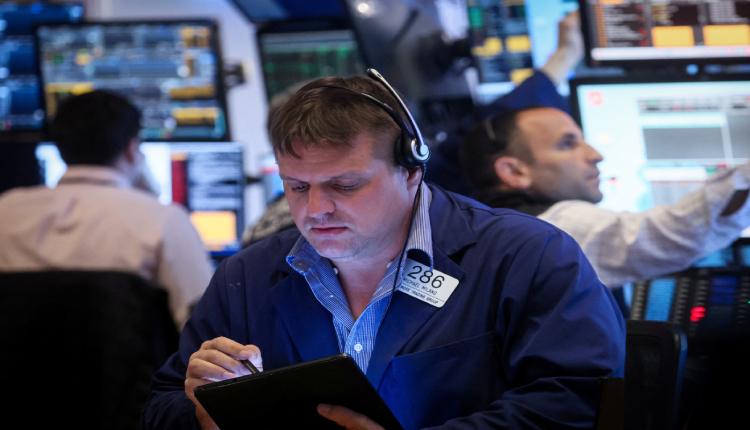U.S. stocks closed with a little change in holiday-shortened trading on Friday, with low volume and conviction.
This comes as investors watched the start of the seasonal shopping season for clues of consumers’ resiliency.
“We had mixed macroeconomic data and the post-Thanksgiving session is only half a day, so there aren’t that many participants,” said Peter Cardillo, chief market economist at Spartan Capital Securities in New York. “But we’re seeing a market that’s on the right path of a year-end rally.”
Retailers around the world were attempting to attract millions of shoppers, many offering steep “Black Friday” discounts the day after the U.S. Thanksgiving holiday.
“Consumers are being very frugal and while they might spend, they’re looking for bargains,” Cardillo added. “The higher cost of money is hitting consumers’ pocketbooks.”
According to a survey by NRF, a U.S. retail trade group, showed U.S. shoppers are planning to spend an average of $875 on holiday purchases this year, an annual increase of about five percent.
S&P Global’s advance purchasing managers’ index (PMI) showed steady U.S. business activity in November, but private sector employment declined for the first time in almost three and a half years, possibly due to the Federal Reserve’s restrictive monetary policy.
Next week’s most anticipated data include the Commerce Department’s second estimate on third-quarter gross domestic product on Thursday, followed on Friday.
By its wide-ranging Personal Consumption Expenditures (PCE) report, which will include further traces on the extent of the Fed’s rate-hike impact.
The focus has progressively shifted to the likely timing of the U.S. central bank’s first rate cut, which will be largely determined by the rate at which inflation cools down toward the Fed’s average two percent target.
New and pending home sales, home prices, consumer prices and ISM PMI are also expected next week.
The Dow Jones Industrial Average (. DJI) rose 117.12 points, or 0.33 percent, to 35,390.15.
The S&P 500 (. SPX) gained 2.72 points, or 0.06 percent, at 4,559.34.
The Nasdaq Composite (. IXIC) dropped 15.00 points, or 0.11 percent, to 14,250.86.
Of the 11 major sectors in the S&P 500, nine ended with gains, led by healthcare (. SPXHC). Communication services (. SPLRCL) and tech (. SPLRCT) closed in the red.
Nvidia (NVDA.O) dipped 1.9 percent after Reuters reported a delay in the launch of the company’s China-focused AI chip designed to comply with U.S. export rules until the first quarter of 2024.
IRobot (IRBT.O) climbed by 39.1 percent in the wake of a report that Amazon (AMZN.O) is set to win unconditional EU antitrust approval for its $1.4 billion acquisition of the robot vacuum maker.
Vista Outdoor (VSTO.N) advanced 3.9 percent after Czech gunmaker Colt CZ Group’s (CZG.PR) cash-and-stock merger offer worth nearly $1.7 billion.
U.S.-listed shares of Chinese EV maker Xpeng jumped 6.085 percent after Volkswagen (VOWG_p.DE) said it would develop a new platform for entry-level electric vehicles in China.
Advancing issues outnumbered decliners on the NYSE by a 2.64-to-1 ratio; on Nasdaq, a 2.29-to-1 ratio favored advancers.
The S&P 500 posted 23 new 52-week highs and no new lows; the Nasdaq Composite recorded 77 new highs and 51 new lows.
Volume on U.S. exchanges was 4.97 billion shares, compared with the 10.49 billion average for the full session over the last 20 trading days.
